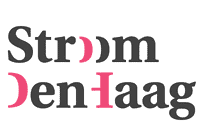Berry Holslag, The Observer, 1994, keramiek foto: Renate Boere, Cas Marks, Laurens van der Pool
Berry Holslag, 'The Observer', 1994
Berry Holslag’s (1947) use of form in his ceramic figures seamlessly aligns with the prominent visual language of the 1980s, a period when the human figure regained significant attention. The sculpture "The Observer" is an example of the realistic sculpture that began to dominate the urban landscape and the art offerings in galleries and museums in the decades leading up to the millennium. This art often presents reality in a way that slightly diverges from initial expectations.
Holslag’s monumental and colorful ceramic figures are immediately recognizable and accessible due to their clear visual language. "What you see is what you get"—is it really that straightforward? Upon closer inspection, it becomes apparent that this visual artist is not only concerned with depicting ordinary, recognizable human figures. She also aims to explore how people function in their daily environment, challenge viewing habits, and question traditions in (sculptural) art.
Holslag adds an extra dimension to her figures by making them larger than life, giving them unique attributes, or placing them on high pedestals. For example, this is the case with the Guardians on Loosduinseweg in The Hague and the monumental figures City Walk at Zuidplein in Rotterdam. Despite their recognizability, the size and distance prevent viewers from fully identifying with them. This subtle alienation prompts questions from the observer.
The same applies to "The Observer." With this unyielding figure in a timeless gray suit, Holslag presents passersby in the busy center of The Hague with a sculpture that, in turn, observes them.


